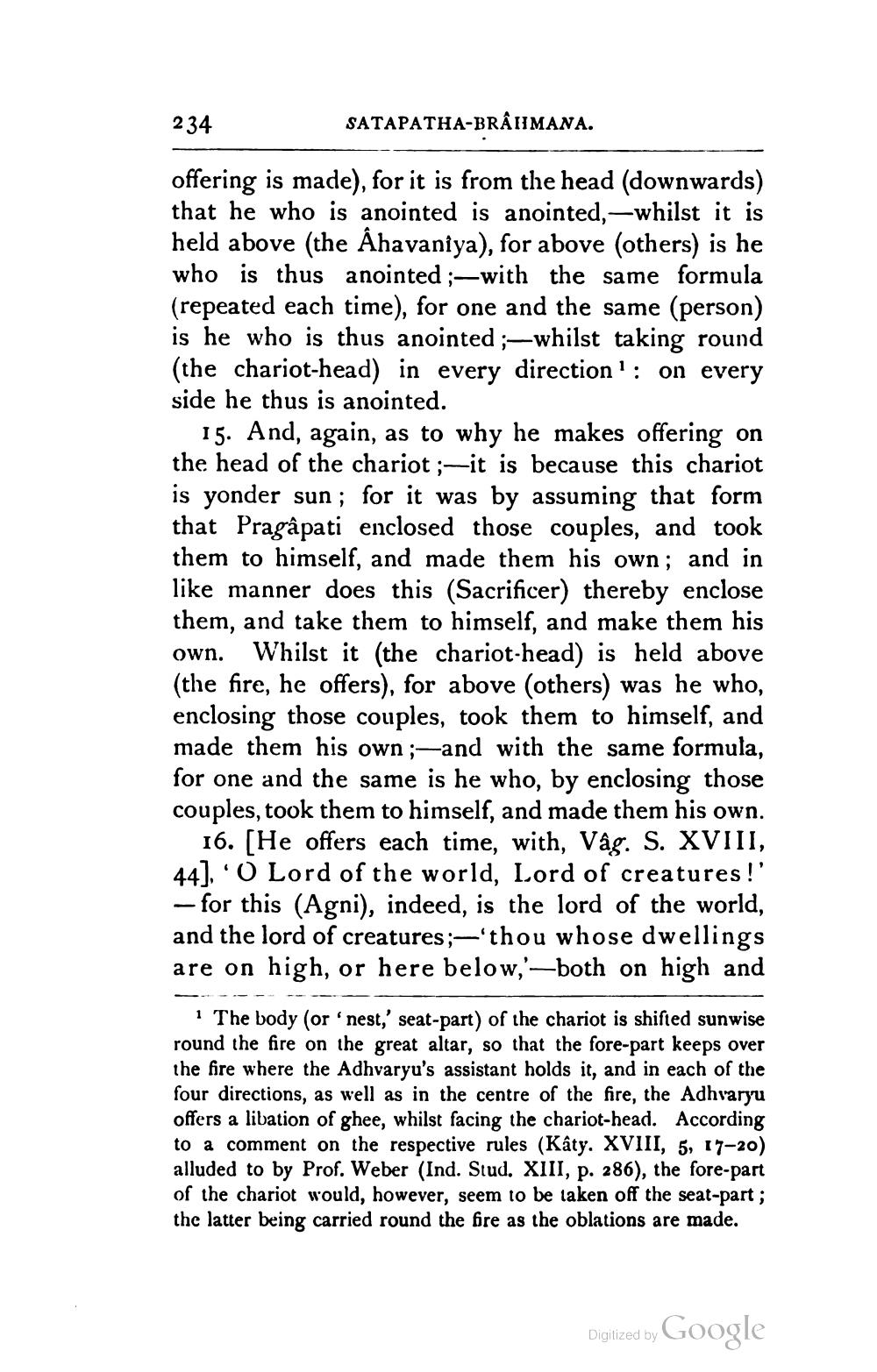________________
234
SATAPATHA-BRÂUMANA.
offering is made), for it is from the head (downwards) that he who is anointed is anointed, whilst it is held above (the Åhavaniya), for above (others) is he who is thus anointed ;—with the same formula (repeated each time), for one and the same (person) is he who is thus anointed;—whilst taking round (the chariot-head) in every direction' : on every side he thus is anointed.
15. And, again, as to why he makes offering on the head of the chariot ;-it is because this chariot is yonder sun; for it was by assuming that form that Pragâpati enclosed those couples, and took them to himself, and made them his own; and in like manner does this (Sacrificer) thereby enclose them, and take them to himself, and make them his own. Whilst it (the chariot-head) is held above (the fire, he offers), for above (others) was he who, enclosing those couples, took them to himself, and made them his own ;—and with the same formula, for one and the same is he who, by enclosing those couples, took them to himself, and made them his own.
16. [He offers each time, with, Vâg. S. XVIII, 44], O Lord of the world, Lord of creatures!' – for this (Agni), indeed, is the lord of the world, and the lord of creatures ;-'thou whose dwellings are on high, or here below,'—both on high and
1 The body (or 'nest,' seat-part) of the chariot is shifted sunwise round the fire on the great altar, so that the fore-part keeps over the fire where the Adhvaryu's assistant holds it, and in each of the four directions, as well as in the centre of the fire, the Adhvaryu offers a libation of ghee, whilst facing the chariot-head. According to a comment on the respective rules (Kâty. XVIII, 5, 17-20) alluded to by Prof. Weber (Ind. Stud. XIII, p. 286), the fore-part of the chariot would, however, seem to be taken off the seat-part; the latter being carried round the fire as the oblations are made.
Digitized by Google




